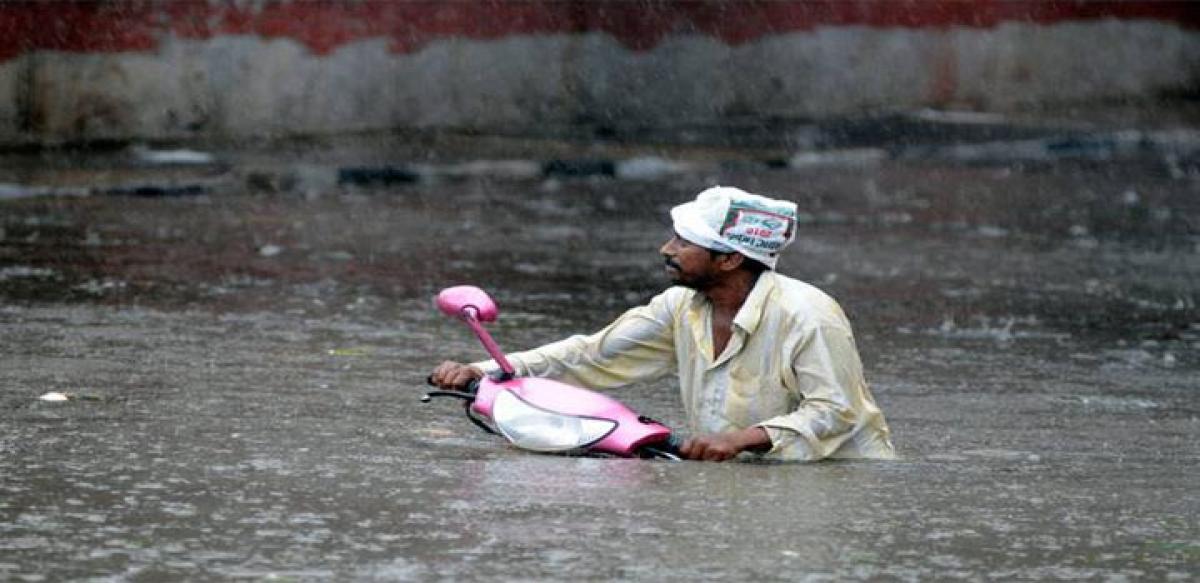The challenge of urban flooding

The unprecedented flood havoc in Chennai is a grim reminder of things to come, thanks to the deleterious impact of the phenomenon of climate change. Such extreme weather events are expected to increase as we fail in our efforts to combat climate change.
The unprecedented flood havoc in Chennai is a grim reminder of things to come, thanks to the deleterious impact of the phenomenon of climate change. Such extreme weather events are expected to increase as we fail in our efforts to combat climate change.

A study done by Indian Institute of Tropical Meteorology, Pune, shows that between 1950 and 2000, the incidence of heavy rainfall events (> 100 mm/day) and very heavy events (>150 mm/day) have increased and moderate events (5-100 mm/day) have decreased. Such abnormal rainfall obviously causes severe floods. According to the latest analysis by the Working Group II of the IPCC Assessment Report (AR5), floods and droughts are likely to increase in India.
The time has come to take serious cognisance of the link between climate change and extreme weather events like Chennai floods. As recommended by Centre for Science and Environment, India should start internalising climate change adaptation in all developmental policies and programmes. From building of cities infrastructure to agriculture and from water supply to energy infrastructure, we will have to make changes to incorporate climate change impacts.
Meanwhile, cities are extremely vulnerable to climate change impacts as they generate no less than 40% of global GHG emissions. As a result of sea-level rise, there will be increasing submergence of coastal cities, resulting in damage to property and loss of economic activity.
It is now well-documented that urbanisation leads to an increase in rainfall. Recent studies such as the Metropolitan Meteorological Experiment (METROMEX) conducted in St Louis, USA, found that urbanisation led to a 5-25 per cent increase in summer precipitation within and 50-75 km downwind of the city. The only alternative is to have increased investment in flood defences.
The National Disaster Management Authority (NDMA) states that urban flooding is significantly different from rural flooding as urbanisation leads to developed catchments, which increases the flood peaks from 1.8 to 8 times and flood volumes by up to 6 times. Consequently, flooding occurs very quickly due to faster flow times (in a matter of minutes). The urban flooding poses a much more serious economic challenge as urban areas are also centres of economic activities with vital infrastructure which needs to be protected. The impact of urban flooding can also be widespread, including temporary relocation of people, damage to civic amenities, and deterioration of water quality and risk of epidemics.
The urban flooding is a result of the Urban Heat Island Effect – the rising heat induces cloud formation while the winds interact with urban-induced convection to produce downwind rainfall. National Aeronautics and Space Administration (NASA) has indicated increased rainfall intensities over urban areas due to the Urban Heat Island Effect. The urban flooding should be tackled through a host of measures.
Such a strategy should begin with developing more accurate and reliable early warning system and effective communication of the same to all the stake holders. Stormwater drainage system needs to be put in place. Risk assessment should be carried out with a multi-hazard concept leading to foolproof land use planning.
The unplanned and haphazard growth of cities obstructs natural flow of flood water causing more damage. Thus, flood management strategies should be dovetailed into urban development measures.

















